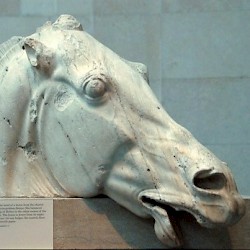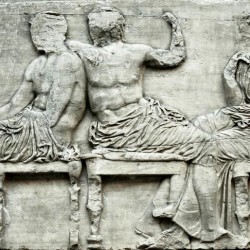Athens - Photos
Athens: one of the main Greek city-states.
The Parthenon
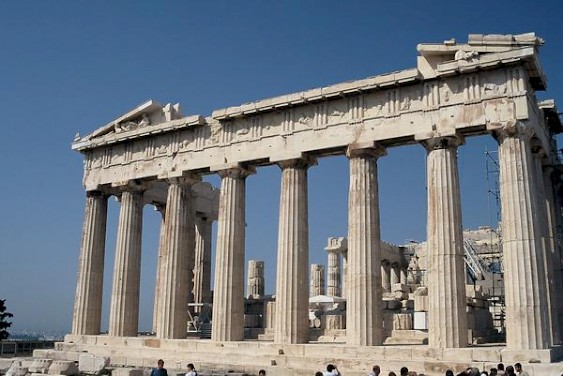
The Parthenon, the main temple of Athens, dedicated to the goddess Athena. The shrine was built on the acropolis between 447 and 438; the decoration was finished in 432. The building is still impressive because it is made of beautiful Pentelic marble.
The Statue of Athena
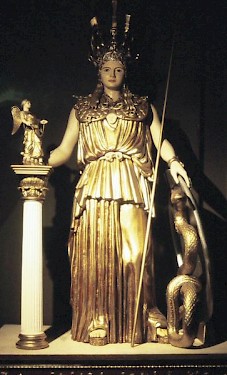
A reconstruction of the cult statue of Athena, made by the sculptor Phidias, who had been placed in charge of the decoration of the Parthenon by the Athenian politician Pericles. The Greek author Pausanias writes:
The statue is made of ivory and gold. She has a sphinx on the middle of her helmet, and griffins on either side of it. [...] She stands upright in an ankle-length tunic with the head of Medusa in ivory on her breast. She has a Victory of about eight feet high, and a spear in her hand and a shield at her feet, and a snake beside the shield; this snake might be Erichthonius. The plinth of the statue is carved with the birth of Pandora. Hesiod and others say Pandora was the first woman ever born, and the female sex did not exist before her birth.
The Parthenon Marbles
The marble decoration of the Parthenon is now in the British Museum in London ("Elgin Marbles"). There are some intrigueing parallels with the equally famous reliefs on the northern and eastern stairs of the Apadana in Persepolis, and it is possible that a written description of the latter monument inspired the former (more...).
The theater of Dionysus

The theater of Dionysus, at the foot of the Acropolis. To any actor, ancient or modern, this is sacred ground. Here, the great tragedies of Aeschylus, Sophocles, and Euripides were performed; on this very place, the comedies of Aristophanes were staged for the very first time. Occasionally, the People's Assembly gathered over here. In the Roman age, it was used for gladiatorial contests.
The Prytaneum
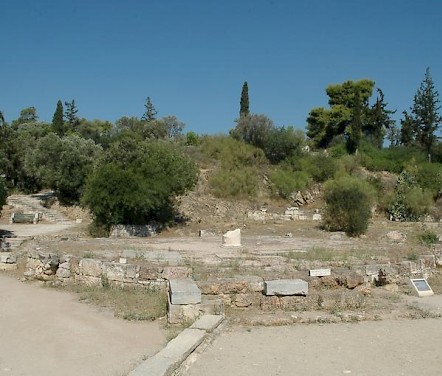
The prytaneum at the Athenian market place (agora) was the building where the prytaneis gathered, the executive committee of the Athenian democracy. It was built in 465 and was called the skias ("parasol"). It is therefore probable that the building had a round, pointed roof. The odd shape may or may not have been inspired by Achaemenid art.
The Long Walls
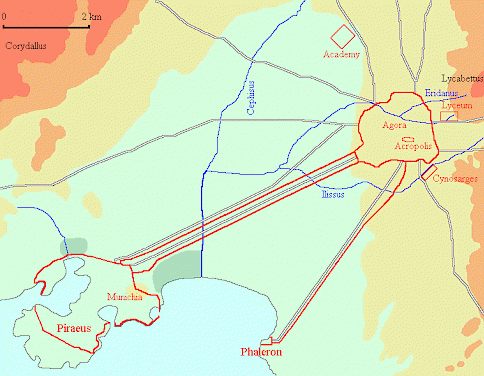
The greatest pride of classical ancient Athens was the Acropolis, but the most important construction must have been the triple wall that connected the city to its ports at Piraeus and Phaleron. These Long walls enabled the Athenians to withstand any siege. They were finally destroyed when the Roman commander Sulla captured the city in the First Mithridatic War (86 BCE; text).
